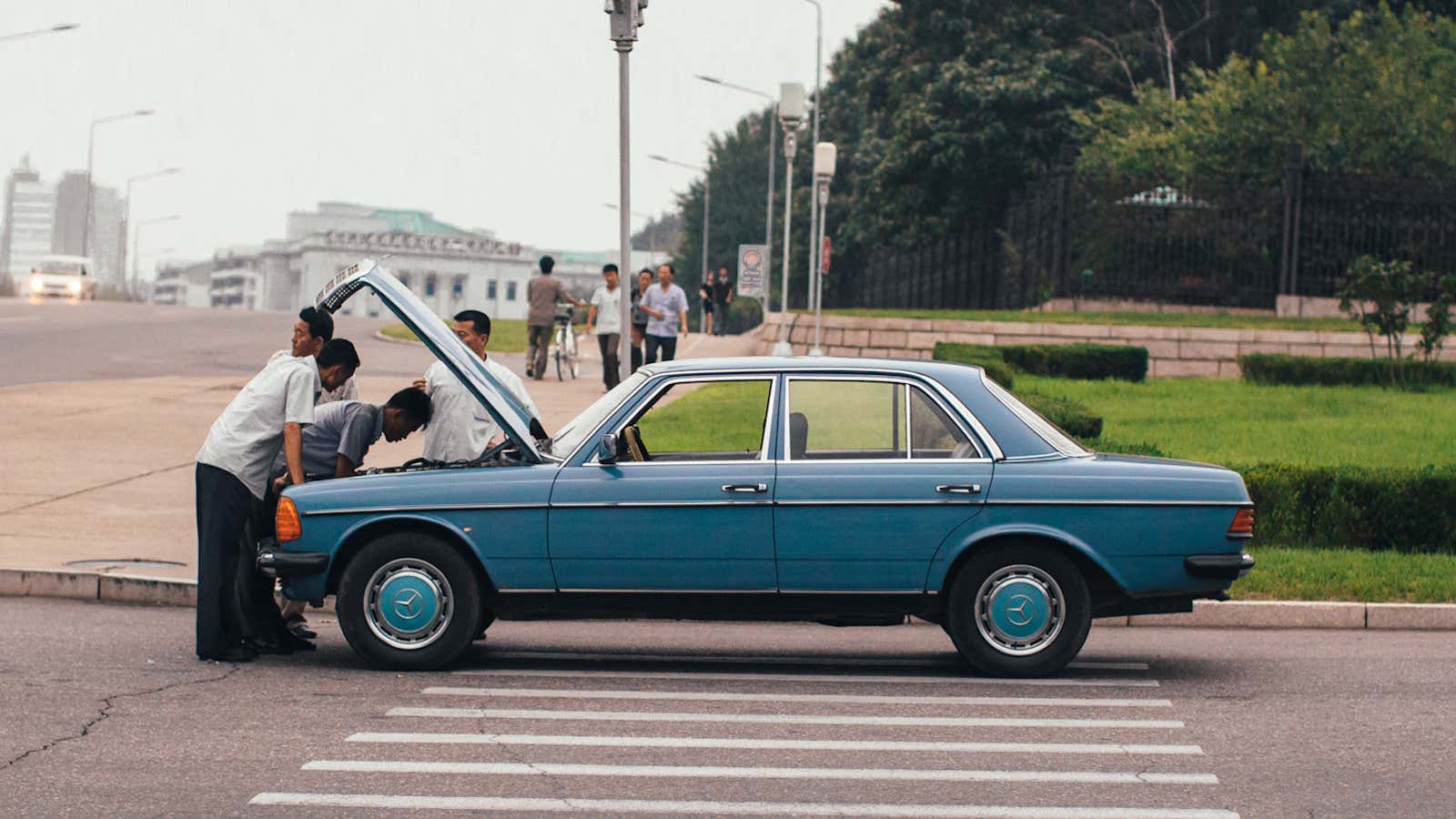Ever since I can remember, I’ve been passionate about photography. Making images is what I grew up on, it’s what sparked my interest in technology, and it’s what led me to study art and design. Perhaps most importantly, however, photography has long been the lens through which I see and explore the world.
So when I first became interested in photographing North Korea, I felt conflicted. I’m well aware of the ethical implications of traveling to the heavily restricted country, not to mention the security precautions. Simply put, there were many reasons not to go to the Democratic People’s Republic of Korea (DPRK). Yet after much deliberation, I decided to visit this past August in the hopes that I might provide a peek behind the curtain, to try to reveal a bit about what life looked like in such a frozen-in-time, monolithic society.
Whether foreigners should travel to the DPRK is a topic of understandable debate. Currently, the most common way to enter North Korea is as a tourist, a trip that can cost close to $1,000 for five days of access. Meanwhile the number of tourists doing so is also increasing; according to The New York Times, 100,000 foreigners entered the country in 2014. However, as North Korea continues to be lead by one of the most ruthless regimes in contemporary times, financial contributions from foreign visitors will no doubt fuel government coffers, furthering the contribution of a moral conundrum.
But is it right to entirely close off a country and its people? Personally, I don’t think so. And I was sure that the totalitarian regime we all know through mainstream media is only one sliver of life that exists behind North Korean doors.
Yet even justifying a North Korea trip on predominantly artistic grounds felt complicated. Many people are aware that visiting the DPRK, even as a tourist, is essentially a scripted tour. You are not able to roam free. You follow a strict itinerary, with strict rules. You see what North Korea bestows upon you. I’ve even heard that North Korea encourages photography during these types of trips because the imagery reinforces their propaganda ideals.
So why go through the ethical guillotine to photograph a country that is presented through a state-sanctioned screen?
For me, it was my confidence that not even government censors could protect the entire country from my camera’s wandering eye. I was excited about the possibility of seeing and feeling more—the imperfections, the nuances, the infinite details that make up a three-dimensional, living breathing ecosystem.
Traveling to North Korea felt like a mild existential experience. I was completely out of my comfort zone, witnessing cultural constraints that have long been discarded elsewhere. It was like taking part in a different era. Even in the face of this surrealism, photography became the tool that kept me grounded, helping me uncover the human side of North Korean life.
But still I questioned myself. Am I sensationalizing? Why am I so impressed by the ordinary? What am I not being shown?
After 24 hours in North Korea, I started to feel a connection with the moments of normalcy that surrounded me. People trip up the stairs, they tease each other, they try to fix their hair in the reflection of adjacent buildings and vehicles. Humanity within North Korea felt relatable in small doses, and this is when my trip became something real. These ordinary moments inspired me to dig deeper into an obscure culture that has been alienated and isolated by its leaders for decades. Observing North Koreans, even in the structured way that I did, awakened a sense of empathy and compassion where before there had been only curiosity and pity.
This doesn’t mean the topic isn’t still an incredibly complicated one. I can’t possibly be comfortable with North Korea’s oppressive government, or its abysmal human rights record. However, I also think it’s important to remember that a country and its people are not one and the same. I feel it’s unfair for any of us to generalize about a society, especially one that is defined by its leaders and suffers from such societal disparity. I wanted to give North Koreans a chance to be shown as individuals for once. Behind the barbed wire of the Demilitarized Zone (DMZ), hundreds of thousands of people go about their daily lives, technically unchained and yet trapped all the same. Hopefully, if even for a moment, I was able to show what life for some of them is really like.




